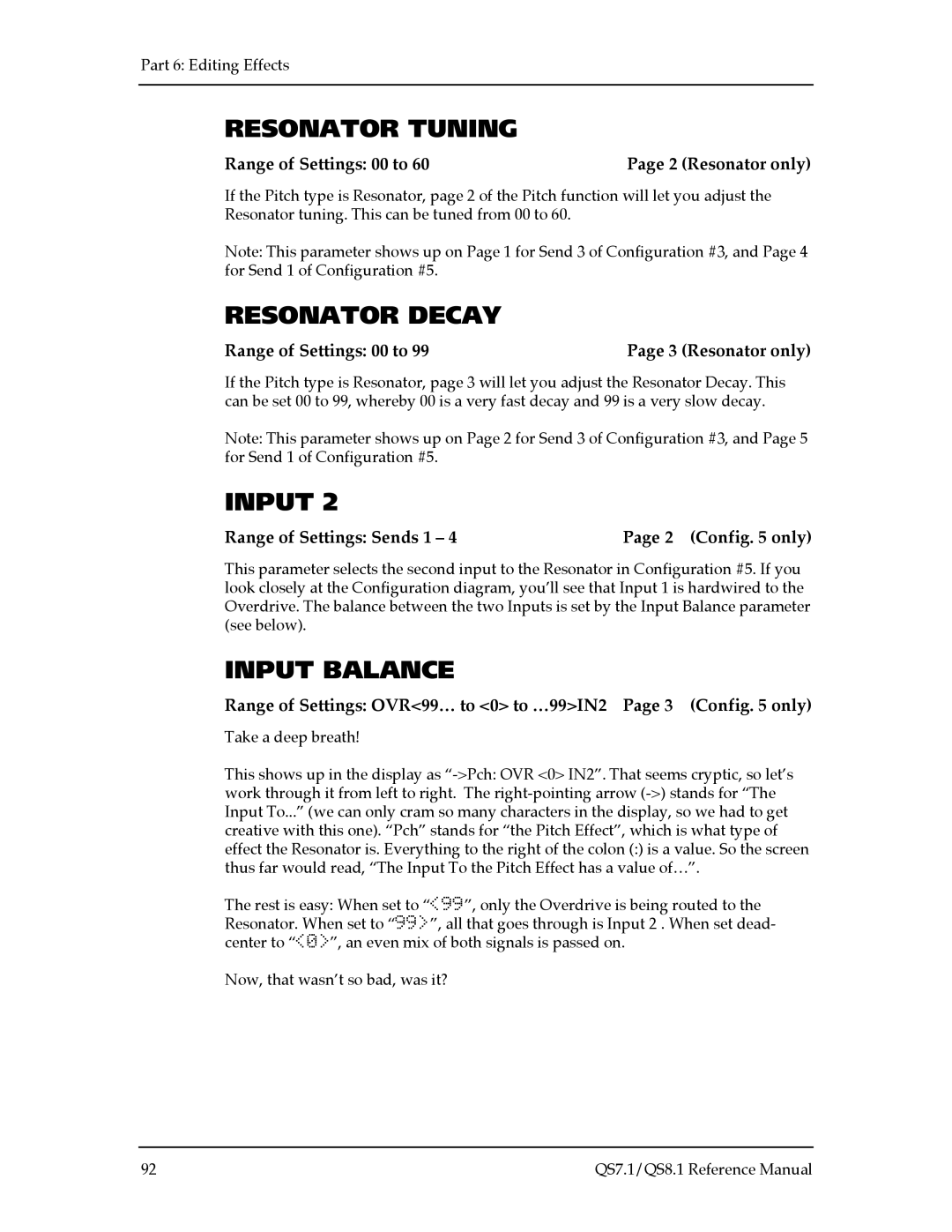
Part 6: Editing Effects
RESONATOR TUNING
Range of Settings: 00 to 60 | Page 2 (Resonator only) |
If the Pitch type is Resonator, page 2 of the Pitch function will let you adjust the Resonator tuning. This can be tuned from 00 to 60.
Note: This parameter shows up on Page 1 for Send 3 of Configuration #3, and Page 4 for Send 1 of Configuration #5.
RESONATOR DECAY
Range of Settings: 00 to 99 | Page 3 (Resonator only) |
If the Pitch type is Resonator, page 3 will let you adjust the Resonator Decay. This can be set 00 to 99, whereby 00 is a very fast decay and 99 is a very slow decay.
Note: This parameter shows up on Page 2 for Send 3 of Configuration #3, and Page 5 for Send 1 of Configuration #5.
INPUT 2
Range of Settings: Sends 1 – 4 | Page 2 (Config. 5 only) |
This parameter selects the second input to the Resonator in Configuration #5. If you look closely at the Configuration diagram, you’ll see that Input 1 is hardwired to the Overdrive. The balance between the two Inputs is set by the Input Balance parameter (see below).
INPUT BALANCE
Range of Settings: OVR<99… to <0> to …99>IN2 Page 3 (Config. 5 only)
Take a deep breath!
This shows up in the display as
The rest is easy: When set to “<99”, only the Overdrive is being routed to the Resonator. When set to “99>”, all that goes through is Input 2 . When set dead- center to “<0>”, an even mix of both signals is passed on.
Now, that wasn’t so bad, was it?
92 | QS7.1/QS8.1 Reference Manual |
